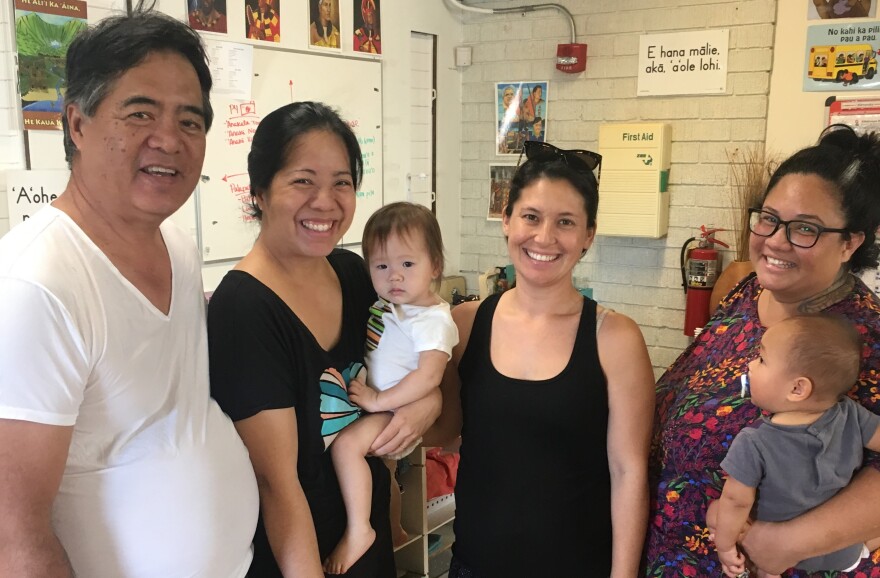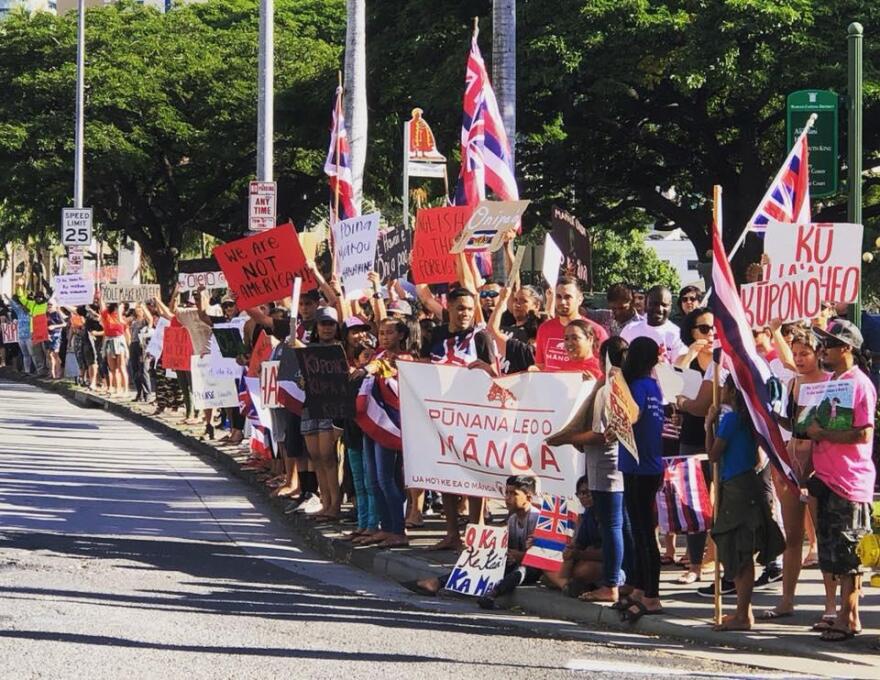The Hawai?i Supreme Court recently ruled in a landmark case that the state is constitutionally required to provide reasonable access to Hawaiian immersion education. The ruling may be a game changer for advocates of ??lelo Hawai?i, the Hawaiian language.
Hawaiian immersion education – where classes are taught entirely in ??lelo Hawai?i – is currently offered at more than two dozen public and charter schools statewide.

Much of this growth has been the result of grassroots, community advocates who have fought to perpetuate the language through the public education system for more than three decades.
But a shift that could increase state support may be underway.

At P?nana Leo O M?noa, parents filed into the Hawaiian immersion preschool on a recent day as school comes to a close. They weren’t there just to pick up their keiki.
“We have to clean!” says Brandy Ahlo, a longtime P?nana Leo parent and mother of three.
Once a month, parents volunteer their time vacuuming carpets, cleaning bathrooms and washing dishes.

Noelle Kauanoe Campbell is on dish duty. “?Ano p??iwa wau no ka mea nui ka hana o ka ?ohana me n? keiki he nui, ak? n? na?e hana k?kou ?e??”
She says she’s somewhat surprised that families with many children find time to help clean. But as any P?nana Leo parent will tell you, this is what’s expected.
“If it's for our keiki, you know we?re gonna do a good job,” said Ahlo.

The movement to perpetuate ??lelo Hawai?i through immersion education began in a preschool on Kaua?i nearly 36 years ago.
The movement’s success doesn’t surprise Kauanoe Kaman?. She’s a former P?nana Leo parent and one of the movement’s founders: "‘O ka mea ?ano p??iwa mai ka ho?omaka ?o ia ke k?ko?o ?ole ?ia o ia pahuhopu nui o ka ??lelo Hawai?i e kekahi mau po?e ma ke aupuni. Ma ke au o ka manawa, ua ?ike maka ka po?e i ka waiwai a ho?omaka e k?ko?o."
She says what was somewhat surprising from the start was the lack of support for ??lelo Hawai?i by some in government. That support grew over time as more began to see the value of learning the language.

Kaman? is now the principal of Ke Kula ?O N?wah?okalani??pu?u (N?wah?), a flagship Hawaiian immersion charter school in Kea?au. When families in Waimea on Hawai?i Island and Wai?anae on O?ahu couldn’t secure support for Hawaiian immersion from their principals, they turned to Kaman?’s school.
"Aia n? i k?l? po?okumu ka mana piha a p?l? i pani ai ka papahana ma Waimea. A ?imi n? ?ohana i kekahi papahana ?? a?e. No Wai?anae ua lele mokulele mai l?kou i Kea?au. A p?l? i ka?a ai ia mau kula he mau ??pana lele k?l?."
She says principals have the final say on whether immersion is a go or not. That led to Waimea temporarily losing its program and families, seeking alternatives, developed a satellite school of the one in Kea?au. Wai?anae also sought out Kaman? for help. Now both programs have become satelite schools of N?wah?.

“The communities are saying, the parents are saying, ?We want more schools, we want more seats, we want more classrooms,'” said Kalehua Krug, a former Hawaiian immersion specialist for the state Department of Education.
He said even the best community efforts may not meet the growing demand for Hawaiian immersion education.

“The community is showing up, sending their children faster than we can produce quality speakers and teachers to address this,” said Krug.
The movement may soon be getting the help it needs from the state. The Hawai?i Supreme Court’s ruling in August that Hawaiian immersion is a right may broaden the state’s role in providing language education.
ON WEDNESDAY: More on the Supreme Court case and what it could mean for Hawaiian immersion.




